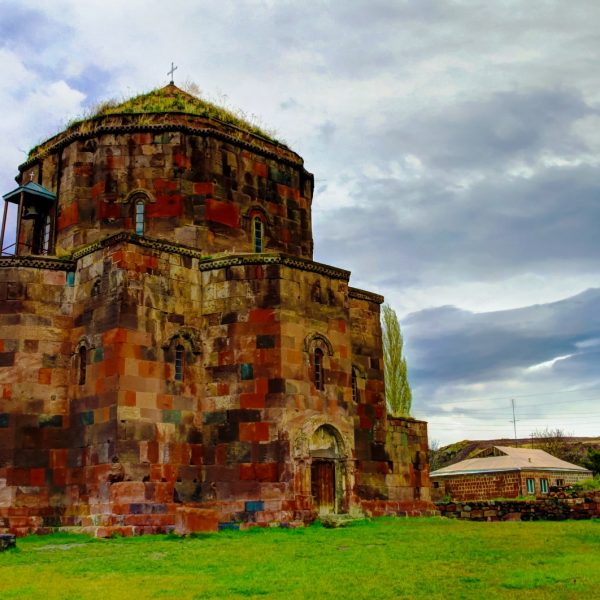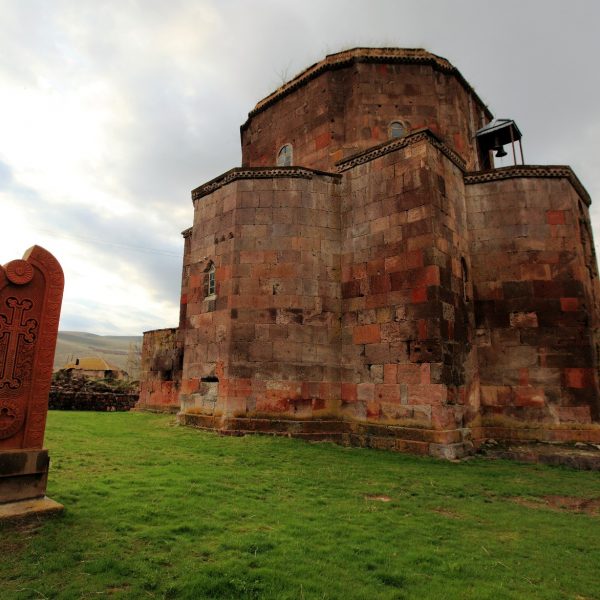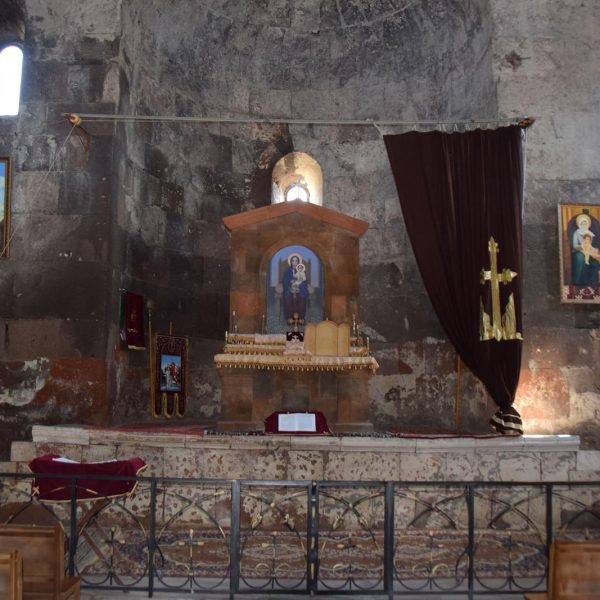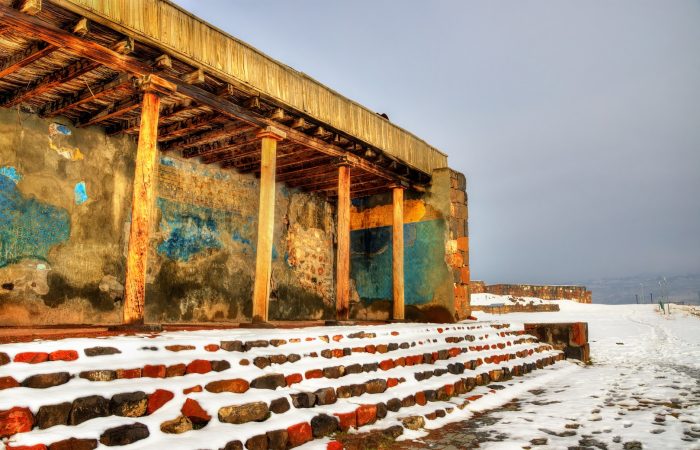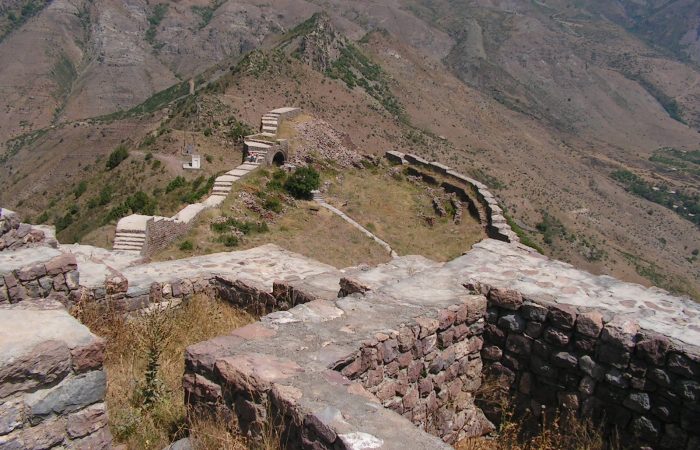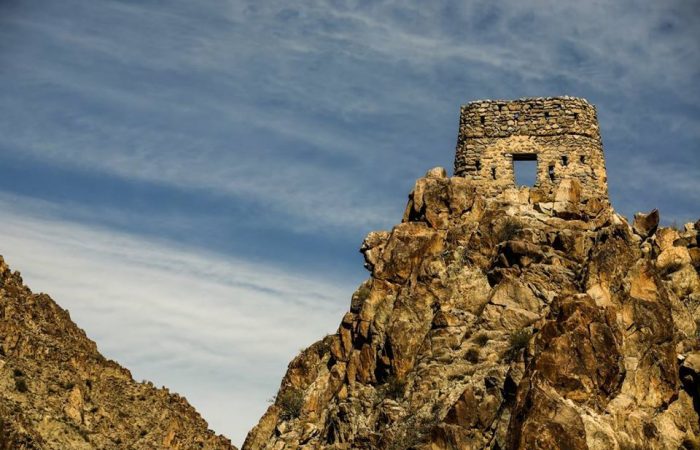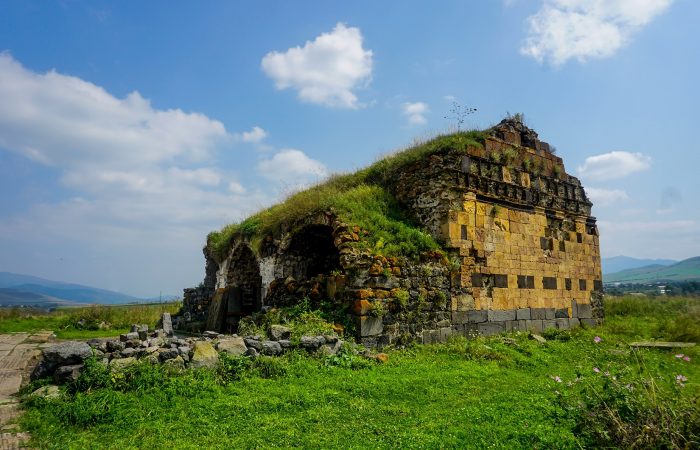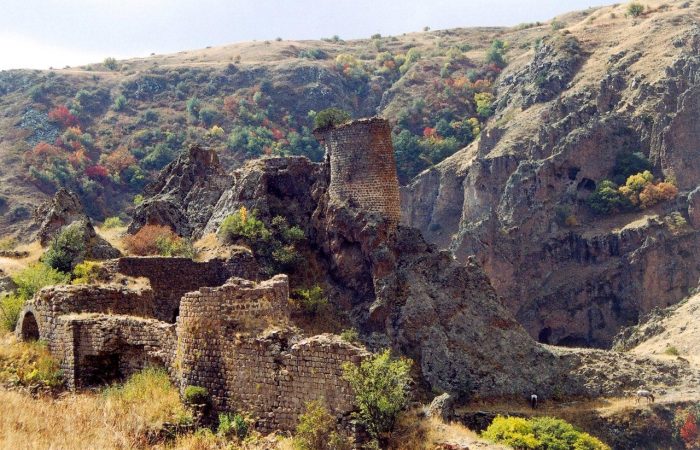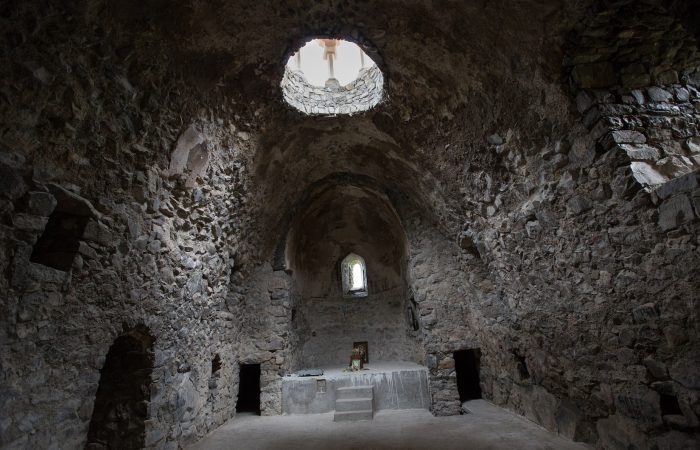Mastara Church
The Church of Saint Hovhannes (Saint Baptist Church), which is also known as Mastara Church, was built in Mastara village, which is located in the province of Aragatsotn. According to an inscription on the southern and western walls of the church, Saint Hovhannes was built by monk Grigor in the seventh century. Back then the bishop was Teodoros Gnunyants (the bishop is remembered to have partaken in the Dvin council in 645).
Nevertheless, the church’s architecture hints at its being built earlier, in the fifth century and not the seventh. The confusion regarding the dates is probably related to the wrong interpretation of the word to construct (“shinel” in Armenian), which in historical sources has been used meaning both “to build” and to “re-build.”
Mastara Church Legend
The saint who spread Christianity to Armenia and who converted Armenian King Tiridates to Christianity was Grigor Lusavorich (Gregory the Illuminator). Grigor’s father who was a remote kinsman to the then Armenian King Khosrov (the father of Tiridates) was sent by the Sassanids to kill him, which he eventually did. Afterward, Grigor’s father got drowned in Araks River, and Grigor and his brother were taken to Caesarea, where Grigor received Christian education.
A legend has it that after Grigor returned to Armenia, he brought with him the relics of Saint John Baptist, which he buried in the place the church of Saint Hovhannes was built. The name of the village and the church derive from there; Mastara has the roots “mas” and “tara” with mas meaning “piece” (implying piece of relics) and tara meaning “I buried.”
Mastara Church: Reconstruction
The church of Mastara has been reconstructed for several times. In 891 the son of priest Artavazd repaired the southern entrance. Later, in the 18th century it was fenced and converted into a fortress. In 1889 the fence was ruined, and upon the order of the village’s priest reparation works were launched. In 1935 the church stopped operating but was fortunately re-opened in 1993. During the “closed” period, however, the church didn’t function as a church but was used as collective farm storehouse. Note that in those years Mastara Church was not the only one to be closed and used for the storehouse purposes. Back then Armenia was a Soviet Union country with Armenian Bolsheviks carrying an anti-church policy and atheistic ideology. Around 800 churches in Armenia suffered from that policy. They were all turned into garages or collective farm storehouses.
Mastara Church: Architecture
The architectural style of Saint Hovhannes Church illustrates the transitional period when more complicated structures came to replace the simple church layouts. The cruciform domed church comes with a huge dome with the diameter of 11.2 meters. Based on medieval Armenian architecture, the walls of the church almost entirely lack decorations.
The Church of Saint Hovhannes seems to be isolated and in some sense it is. It’s where people feel relieved especially when a gentle breeze blows through the trees and seems to be the silent witness of your thoughts and decisions.
Lastly, Mastara Church is not the only thing to see in the village. To the south of the church there is a chapel named Tukhmanuk (translated from Armenian into English it means “dark-skinned kid”), not far from it there is the small church of Saint Nshan (Sign). There are also the ruins of a medieval fortress and also the Chapel of Nakhavka built in 1897 in the place of the Church of Stepanos Nakhavka (Christian saint). To the east of the village there is a medieval cemetery to the east of which there is Mastara’s huge khatchkar (cross-stone) dating to 1223.
To sum up, all these buildings as well as architectural monuments found in Mastara village together with the Church of Saint Hovhannes state one thing – it was a popular medieval settlement.

